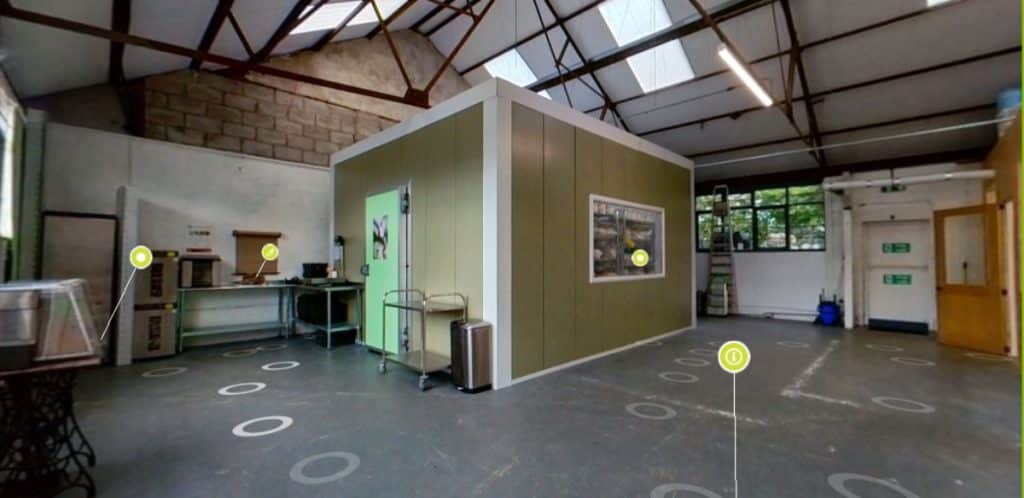From the outside, a mushroom farm can look rather unremarkable. But once you get inside, it’s impressive, regardless of whether it’s a traditional low-tech farm or a modern high-tech facility.
No two mushroom farms are the same, and even though you generally need the same spaces, many factors play a role in the design and layout of a mushroom farm.
The mushroom growing process has several stages, and a mushroom farm will usually need designated areas for substrate preparation, inoculation, incubation and fruiting.
Read on to learn more about the factors that influence what a mushroom farm looks like, with pictures that show different types of mushroom farms.
But before you do, you may want to take a quick 360 VR tour of our mushroom farm.
What Does a Mushroom Farm Look Like?
Not all mushroom farms look like ours. In fact, mushroom farms vary significantly in appearance, and there are several factors affect how they look, including:
1. Scale
Mushroom farms vary in size from enormous commercial farms to small hobby mushroom farms.
For example, The largest single-site mushroom growing complex in the western hemisphere is Phillips Mushroom Farms, located in Kennett Square, Pennsylvania, USA.
This farm covers an area of over 9 million sq. ft (836127 m2) and produces over 57 million lb (2.6 million kg) of mushrooms per year.
And this is not the only farm of this size, there are also several massive mushroom farms in China, both high-tech and traditional.
But you don’t need this much space to start a profitable mushroom farm.
Based on our experience, if you optimized your space well, you could grow up to 110 lb (50 kg) of mushrooms a week in around 323 sq. ft (30 m2), including space for inoculation, incubation and fruiting.

2. Type of Mushroom
The type of mushroom, their favorite substrate and the conditions they need impact how a mushroom farm looks.
As mushroom species grow differently, for example, top or side fruiting species, the type of mushroom also dictates the best containers to use when farming them.
You can cultivate some easy-to-grow mushroom species outdoors in garden beds or on logs, but fussier species need more controlled growing conditions.
Mushroom farmers often use greenhouses, fruiting chambers or grow rooms to provide ideal growing conditions for a particular mushroom species, increasing their yields.
Here are some images that show how the type of mushroom affects how a mushroom farm looks.
Button Mushrooms
Button mushrooms are the most cultivated mushroom species worldwide and also one of the most well-known.
They’re a top fruiting species and are usually grown in trays or mushroom beds on a substrate consisting of manure and straw.
Mushroom farmers often grow button mushrooms with very little light to keep them pale white in color.
Here are some images of button mushroom farms:
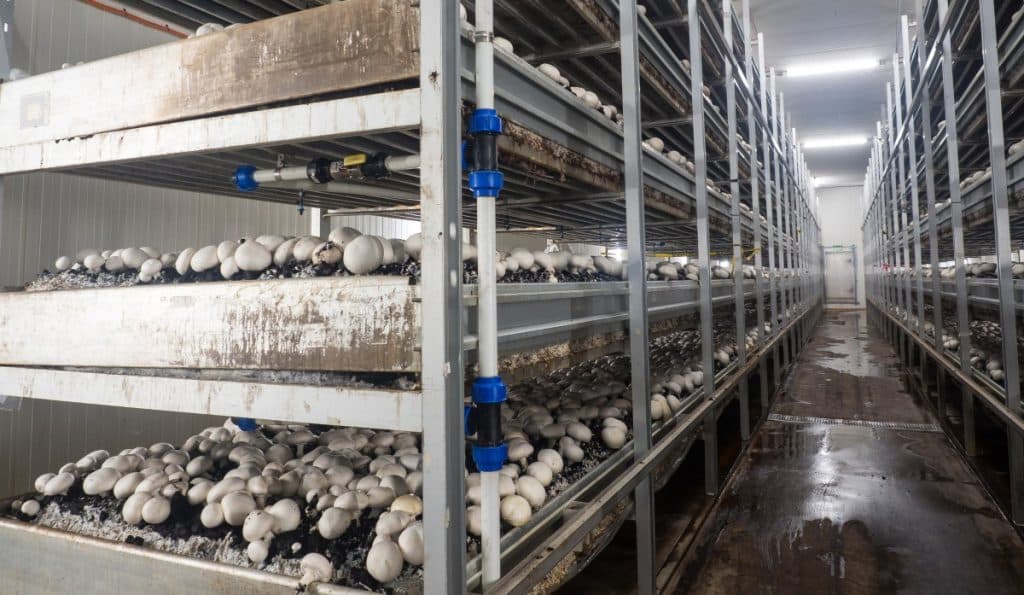
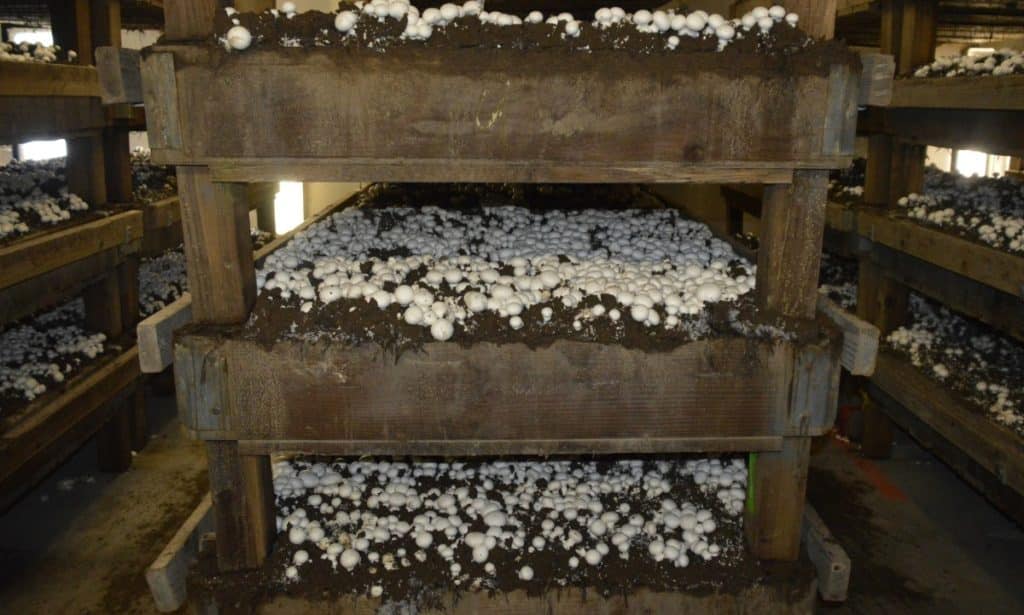
Shiitake Mushrooms
Shiitake mushrooms are popular edible and medicinal mushrooms and the third most produced mushroom species worldwide.
Mushroom farmers commonly use one of two methods to grow shiitake mushrooms; supplemented sawdust blocks or hardwood logs.
Here are some images of shiitake mushroom farms:

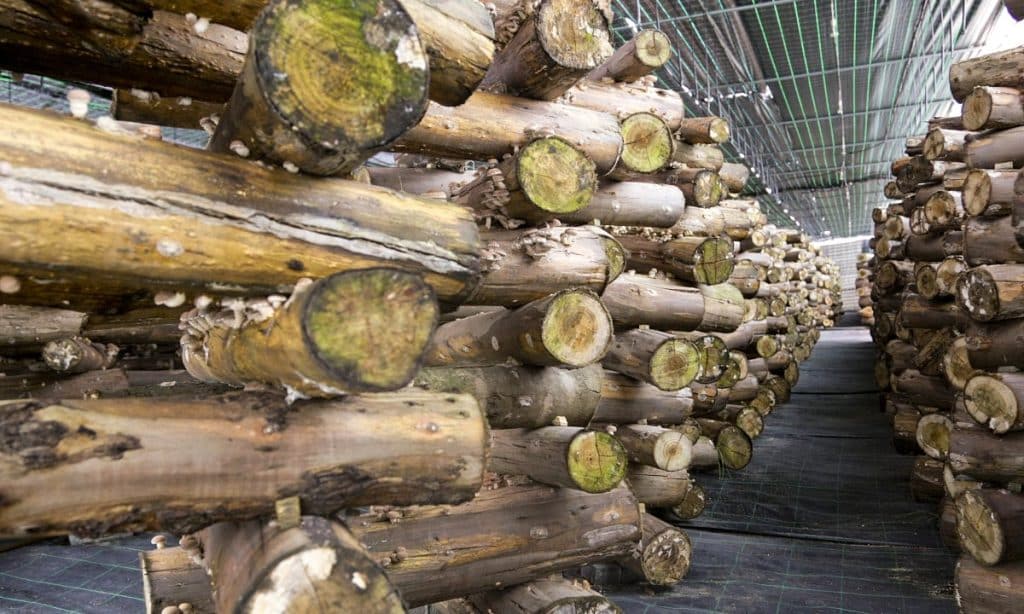
Oyster Mushrooms
Oyster mushrooms are a side-fruiting species and the second most cultivated mushrooms worldwide after button mushrooms.
Popular with hobby mushroom farmers, oyster mushrooms will grow on a wide range of organic material but are commonly farmed using straw or supplemented sawdust as a substrate.
Oyster mushroom farmers also have a choice of containers and often grow oyster mushrooms in stacked buckets, large hanging bags, smaller substrate blocks or bales on shelves.
Low-tech Chinese mushroom farms often use bags with collars to grow oyster mushrooms. These bags are then stacked vertically to make the most of the available growing space.
Here are some images of oyster mushroom farms:
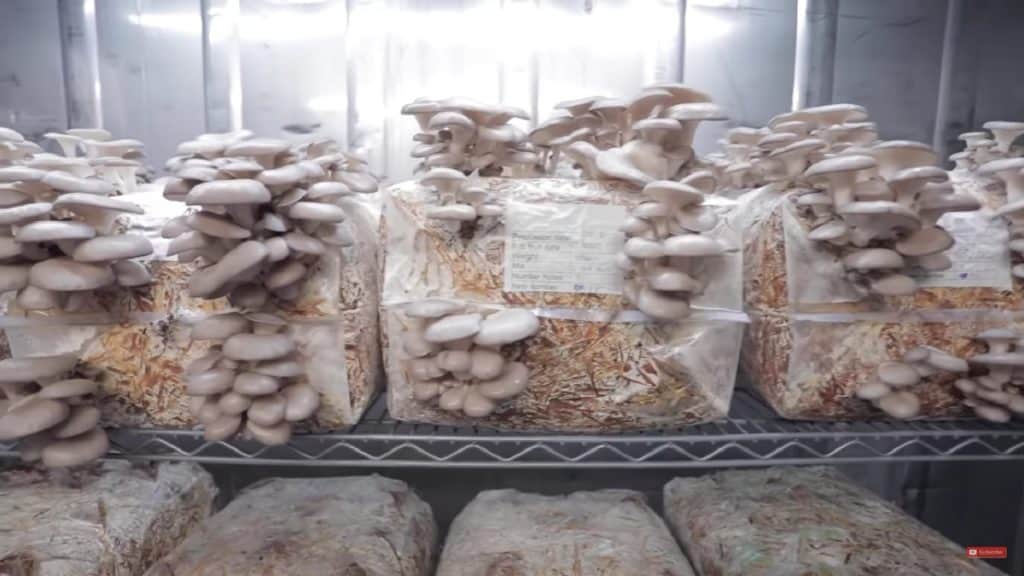
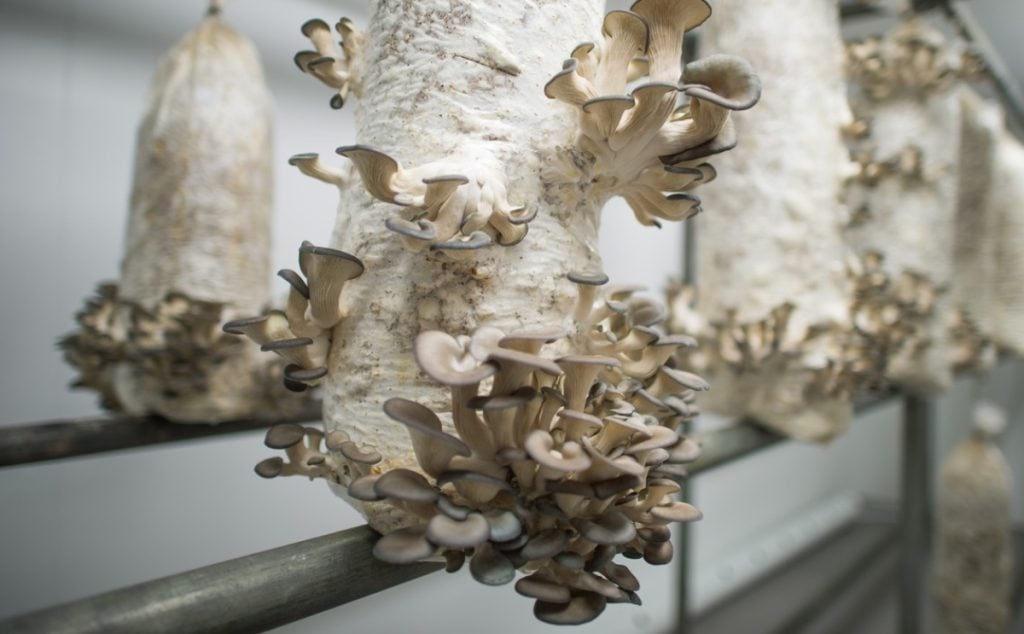
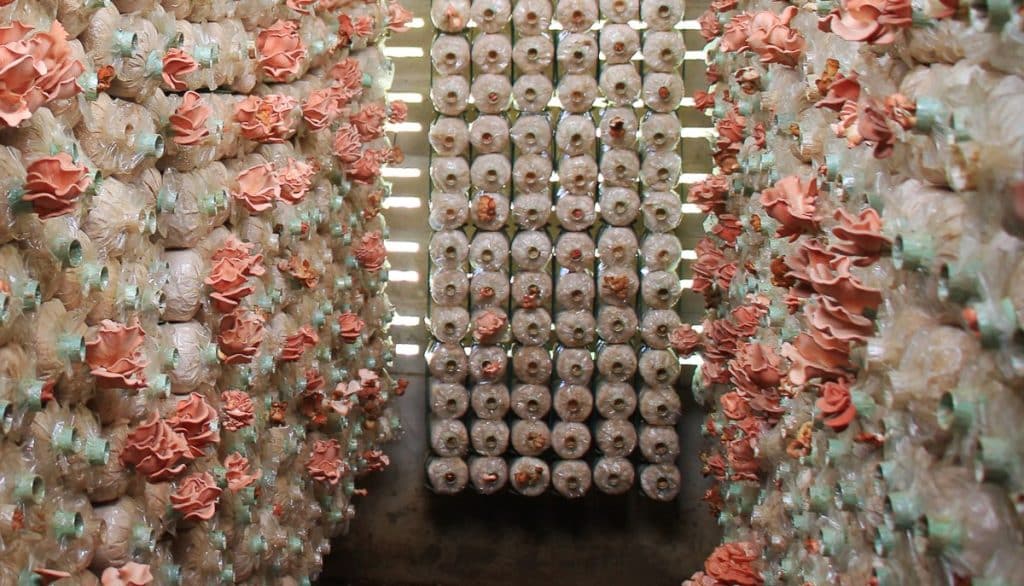
Reishi Mushrooms
Reishi mushrooms are one of the most well-known medicinal mushrooms, with a history of use in traditional Chinese medicine that goes back over 2000 years.
Today, mushroom farmers grow reishi mushrooms in bags of supplemented sawdust or on hardwood logs stacked above ground or buried in the soil.
As a result, reishi mushroom farms often look very different from each other.
Some farms have bags with collars stacked one on top of the other. Others have rows of shelves to hold substrate blocks or greenhouses piled full of inoculated logs.
And if you visit a farm where they bury reishi logs in soil in a greenhouse, it looks like they’re growing out of the ground.
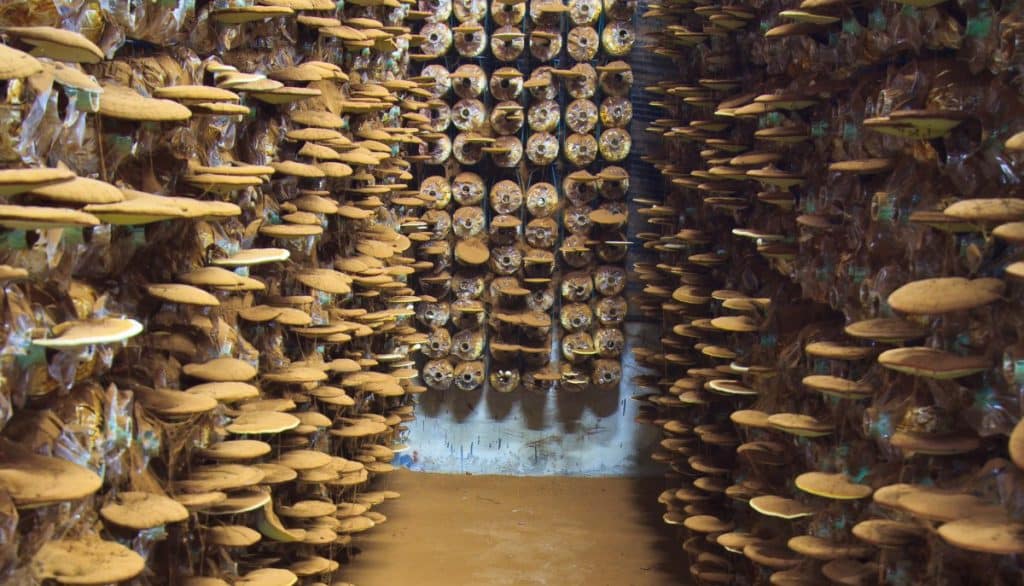
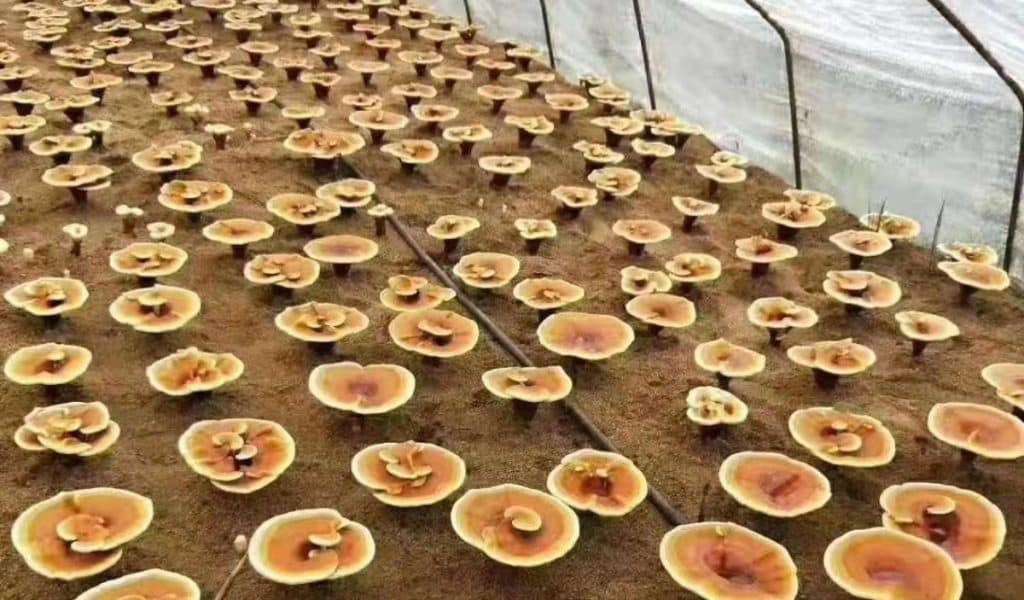
Enoki Mushrooms
These delicate mushrooms are top fruiting and commonly grown in bottles filled with supplemented sawdust.
Farmers grow enoki mushrooms in high Co2 conditions with very little light to get the desired long white stems and small caps.
The pictures below show organic enoki mushrooms growing in bottles at Enviro Mushroom Farm. This high tech farm uses state of the art technology to produce up to 3 million lb (1.3 million kg) of organic specialty mushrooms every year.
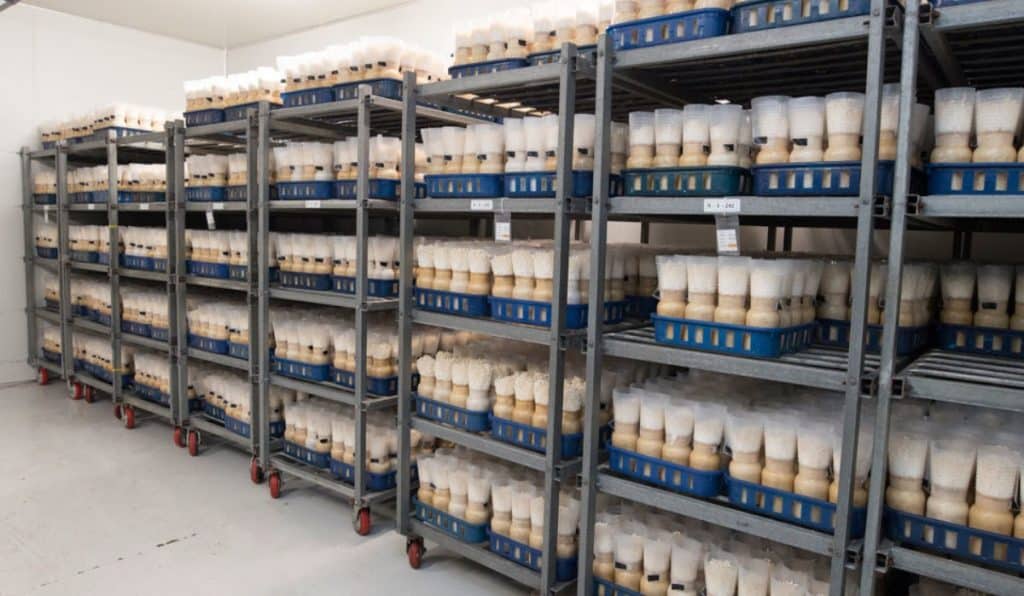

3. Country
Mushroom farms look different from country to country. Here’s a brief look at a few countries and regions and how they differ:
China
In China, mushroom cultivation has been around for thousands of years, resulting in many traditional outdoor seasonal greenhouse mushroom farms, which look like vegetable farms.
In Qingyuan County, an area that produces around 20% of China’s mushrooms, they have a different approach.
They grow mushrooms using an agroforestry system that integrates forest conservation with mushroom production.
But as the largest producer of mushrooms worldwide, China also has massive, automated mushroom farms that use the latest technology and modern growing methods.

Europe
In Europe, there are lots of traditional mushroom farms. Many of these grow button and oyster mushrooms in bales or beds using straw as a substrate.
But not all their mushroom farms are traditional. There are also high-tech farms using automated bottle-cultivation methods and smaller-scale farms that grow gourmet and medicinal varieties in bags on shelves.
North America
North America is similar to Europe, with many small and medium-sized indoor farms growing a range of gourmet and medicinal varieties in bags on shelves.
But they also have some larger farms, including the largest single-site mushroom growing farm in the western hemisphere.
Where are most mushroom farms?
Most mushroom farms are in China, the largest producer of mushrooms worldwide by a long way, with other countries trailing far behind.
In 2022, China produced an estimated 45.4 million metric tons of mushrooms and truffles, followed by Japan, the United States, India, Poland, the Netherlands, Spain, Canada, the Russian Federation and France.
4. Climate
The climate in a particular area will impact how a mushroom farm looks as it affects whether you can grow mushrooms outdoors or only indoors.
Farmers can cultivate mushrooms seasonally outdoors or in modified greenhouses in regions with mild, humid climates.
But most mushroom farms need climate-controlled greenhouses or enclosed grow rooms to increase yields and grow mushrooms year-round.
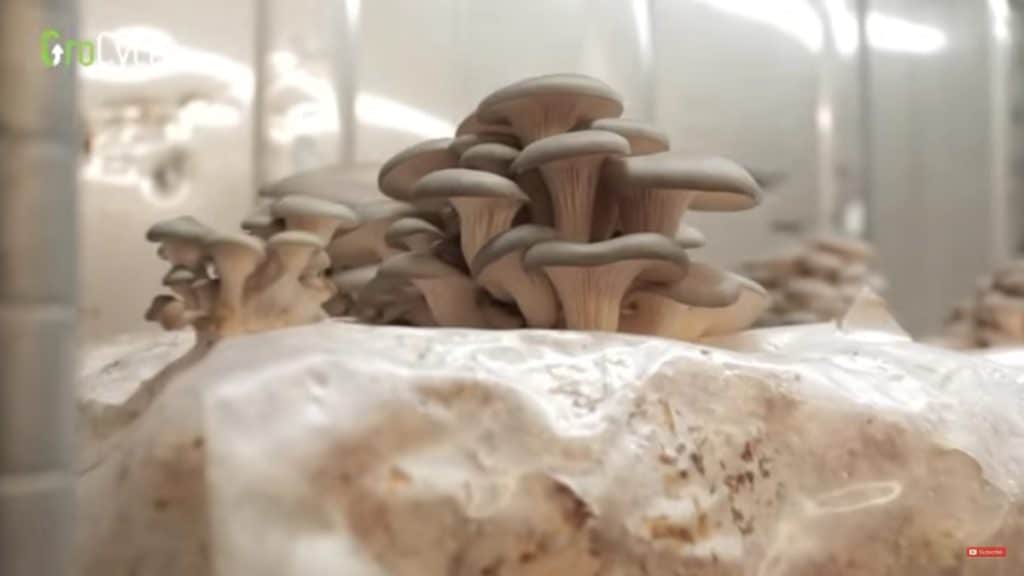
5. High-Tech vs Low-Tech
You may have heard us talking about low-tech mushroom farming and wonder what the difference is between hi-tech and low-tech mushroom farming.
An example of a high-tech mushroom farm would be a large-scale farm with an almost fully automated system of growing mushrooms in reusable bottles.
This type of high-tech mushroom farm uses machines to mix substrate, fill and sterilize bottles and clean the bottles when harvesting is complete.
Low-tech mushroom farming doesn’t need the large, expensive, and energy-intensive equipment used in commercial mushroom growing.
We believe the best way for small-scale farmers to grow mushrooms is the ‘low-tech’ way. An example of low-tech would be growing oyster mushrooms on straw using easy cold pasteurization techniques.
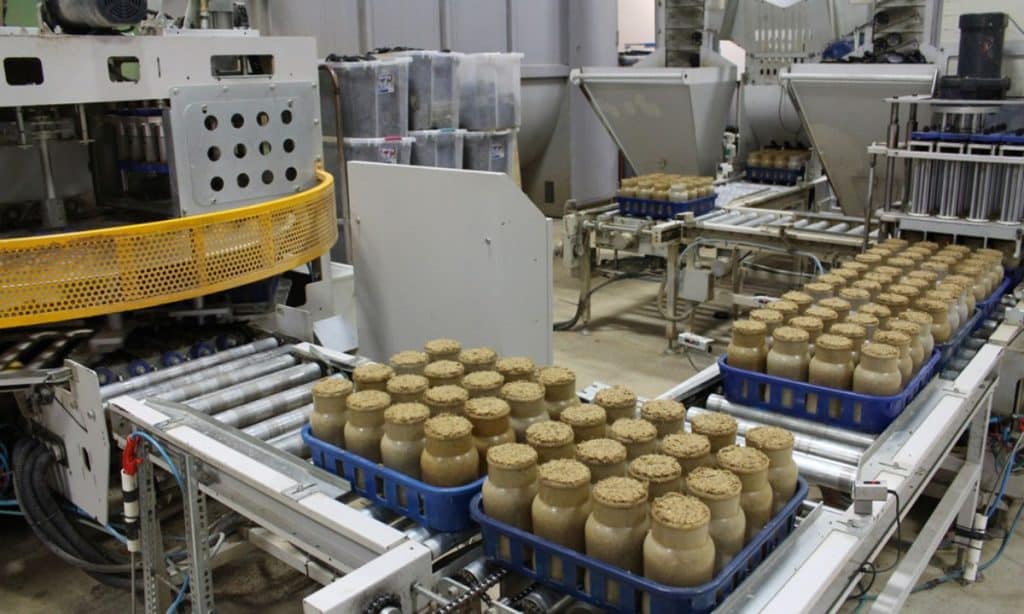
6. Choice of Grow Room Layout
As mentioned above, not all farms have grow rooms, but those that do can vary significantly in appearance.
Farmers have several factors to consider when designing a mushroom grow room, and their decisions impact how their farm looks.
Here are some of the things they consider when designing a grow room:
- Whether to use shelves or have hanging bags
- Is access needed for harvesting machinery or only for staff?
- The placement of the doors, as they influence the layout of walkways and shelving.
- Does the layout allow adequate airflow around the room?
Which Mushroom is Best for Farming?
In our opinion, oyster mushrooms are best for small-scale farmers as you can grow them with minimal equipment using low-tech methods.
Additionally, because oyster mushrooms are hardy and fast-growing, they’re considered the ideal mushroom for novice growers and one of the most profitable mushroom species to grow.
There are several varieties of oyster mushrooms, including pink, yellow and blue, that have striking colors.
Cultivating a range of colorful oyster mushrooms allows you to create attractive displays at farmer’s markets, and you can sell them to restaurants to add a touch of color to their dishes.
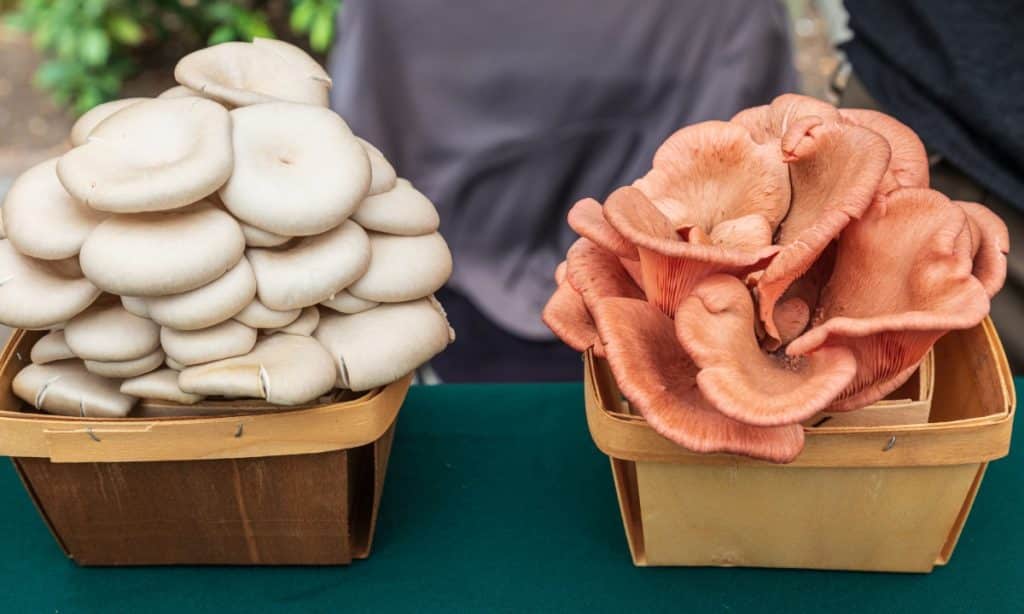
What is the Most Commonly Sold Mushroom?
The most commonly sold mushrooms are button mushrooms (Agaricus bisporus).
These small round mushrooms are the most cultivated and consumed mushroom species globally. They’re commonly found in grocery stores, where they’re sold under various names, including white mushrooms, baby mushrooms or table mushrooms.
How Do You Start a Mushroom Farm?
Starting a mushroom farm can be intimidating as there is so much to learn, but if you go the low-tech route, you can create a rewarding side business and learn as you go.
We recommend starting small and growing your business as you gain experience and clients.
Our article, “How To Start a Mushroom Farming Business (Mushroom Business Plan),” has some tips and can help you decide if a mushroom growing business is right for you.
When we first started, we had a lot to learn, and getting to where we are today took time and lots of trial and error, but it’s been worth all the effort.
Based on what we learned, we compiled our top 5 tips for new mushroom growers and created a free video workshop and eBook to help you set up a low-tech mushroom farm.
There are 5 main steps you need to take when setting up a mushroom farm.
- Find a suitable space
- Plan the layout and design of your farm
- Set up your farm and build any necessary grow rooms, etc.
- Grow mushrooms
- Harvest and sell your mushrooms
Our article on how to set up a low-tech mushroom farm has more details on each of these steps with some insightful tips.
Final Thoughts
There are many different types of mushroom farms, and based on their location, the technology used and the type of mushrooms they’re growing, they look very different.
We hope the images above have given you some insights into what a mushroom farm looks like, and remember, you don’t need much to get started if you plan on growing mushrooms the low-tech way.
To learn more about growing mushrooms, visit our Mushroom Growing Hub or try one of our mushroom cultivation courses.
Our introductory course shows you how to grow oyster mushrooms at home on a small scale using simple methods and minimal equipment.
Or, if you want to get more in-depth, try our Low Tech Mushroom Farming course, where we walk you through how to plan, build and run a small-scale mushroom farm.
